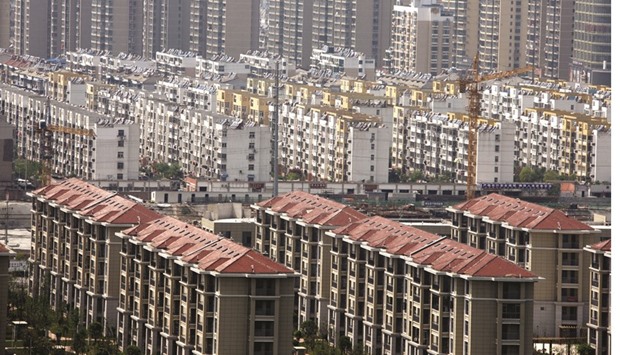China’s biggest tax overhaul in more than two decades starts May 1, with changes set to reduce the burden on services companies and encourage factories to upgrade and innovate.
Under the new system, taxes in the construction, property, finance and consumer service sectors will now be applied to the value-added – such as the difference between wholesale and final sales price for a retailer. That’s in contrast to the existing revenue-based levy. Manufacturers, which already operate under a value-added tax structure, will now get tax breaks on research and development to help them modernise. The plan will ease corporate payments by 500bn yuan ($77bn) this year, with much of that total coming at the expense of local governments. The central government plans to further expand its budget deficit to help cover the shortfall and may redistribute some VAT revenue back to provinces.
The new plan mixes fiscal stimulus in the form of an effective tax cut for some businesses - especially those in services and retail - with structural change aimed at helping low-end manufacturers upgrade and retool factories and research new technologies seen as key to China’s economic future.
“If it’s implemented well, it’s a tax cut, and it could have a substantial impact on the economy,” said Larry Hu, head of China economics at Macquarie Securities in Hong Kong.
“It’s more about longer-term economic restructuring than a short-term boost, because shifting from the business tax to VAT will end discrimination against services companies, helping the economy to rebalance.”
That could mean a further shot in the arm for services, which made up more than half of gross domestic product for the first time last year and are growing faster than the rest of the economy. Industries including logistics, broadcasting and aviation already are
subject to VAT.
Putting all companies and industries under the same tax regime “will generate a massive tax cut for businesses and add incentives to the real economy,” said Jin Dongsheng, a researcher at the State Administration of Taxation
in Beijing.
Not everyone wins out from the new regime. Local governments are poised to lose 125bn yuan to 250bn yuan next year, according to Iris Pang, senior economist for greater China at Natixis in Hong Kong.
The construction, property, finance and consumer service sectors contribute 80% of China’s total business tax revenue, which in turn accounts for about 40% of total provincial government revenues. The central government plans to expand its fiscal deficit-to-GDP ratio to 3% this year, in part to help plug that gap.
Credit Suisse Group analysts forecast a diversified impact from the VAT across sectors, with consumer services, auto dealers and makers set to benefit, while construction companies may be hit because a high proportion of costs aren’t deductible.
Yet even with just days to go before the new regime takes effect, the government still hasn’t filled in the blanks on all the specifics, leaving uncertainties for some businesses, according to Vincent Chan, head of China research in Hong Kong at Credit Suisse.
The implementation may lead to higher transaction costs in financial markets for banks. The tax will add to the costs of repurchase transactions, a form of interbank financing, according to Frances Cheung, Hong Kong-based head of rates strategy for Asia ex-Japan at Societe Generale. There may be also an indirect impact on the near-term demand for bonds that are eligible for repo transactions, Cheung wrote in a note on April 21.
Premier Li Keqiang told a VAT reform meeting with provincial leaders in Beijing last week that the overhaul fits China’s mission to innovate and upgrade its economic structure.
“It can drive demand and create favourable conditions for modern service industries and small businesses,” Li said, according to a statement from the State Council. “It provides powerful support to current economic growth and will also drive future growth.” China historically levied a business tax on the service sector and VAT on industrial firms. That resulted in double taxation in some instances as service companies couldn’t deduct costs under the business tax system even if their suppliers have already been taxed, according to Jin of the taxation research institute.

Buildings of a residential compound in Huaibei, Anhui province. China’s construction, property, finance and consumer service sectors contribute 80% of the country’s total business tax revenue, which in turn accounts for about 40% of total provincial government revenues.
